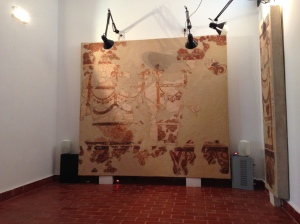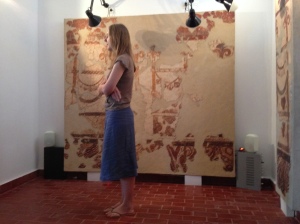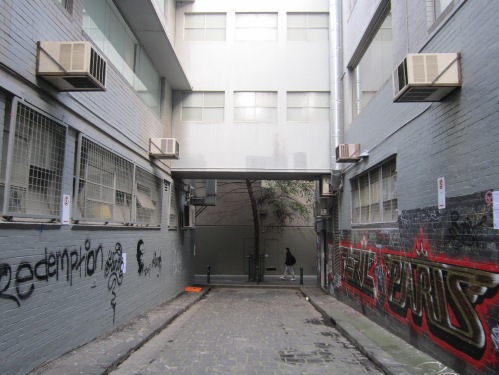I was a participating sound artist at the May 2015 Aural Lighthouses symposium in Santorini, Greece. As the brochure explains:
Curated by Ileana Drinovan-Nomikos, the event hosts artists and scholars from around the world including Greece, United States, India,United Kingdom, Australia, Germany and Italy. Sound artists and atmospheric scientists are brought together to evoke the emotional, affective and visceral responses of sound and frequency, and their effect beyond what scientifically manifests in graphs and images. The symposium explores human aural performance and how we make and create disaster sounds to seem natural and to fade into a perceived inaudibility. The works further explore the oscillation between apprehensive, stressed, distressed and relaxed listening, and so the difference between dread and the beauty of disaster listening.
My contribution was a four-channel immersive sound work, constructed from sonic materials that were part of my 2012 City of Melbourne public art work, Revoicing the Striated Soundscape. Unfortunately I couldn’t attend the conference but I was lucky enough to receive this feedback from the symposium co-coordinator, Ljubi Matic.
Rupture was played publicly starting from Tuesday May 19th, 2015 through Saturday May 23rd, 2015, every day for at least 4 afternoon and early evening hours. A separate room, approximately 4×4 meters large, was dedicated to the piece. Santozeum is a conglomerate of rooms of different sizes on several floors, so the audience could ramble around the space walking in and out during the pieces and taking in different sound events at their leisure. In the room where Rupture was listened to, there were 4 paintings on the walls, copies of the wall paintings of Akrotiri (an ancient site on Santorini). The speakers were located on the ground, in the 4 corners of the room. The audience was not seated (as I think you had originally suggested) because we thought that chairs would make the space too cramped. However, some listeners felt inclined to sit down while listening, on the ground and next to the speakers, and then rotate their position during their listening session. This rotation could and did happen quite quickly as the speakers were not too far from each other. The room, smaller than what is a typical gallery space, thus, I think, brought a special sensitivity to auditors’ 4-way movements. Those among the listeners who did not have the chance to read the info found in the brochure had not been informed about the type and provenance of the sounds you had created and used for the installation. Upon learning that, some came for the second time. An audience member told me he felt listening to Rupture transported him above the ground, to a flight of sorts, that is, flights of different kinds, some more or less comfortable, others evoking situations of fleeing and mobilization for war. Another one compared the listening experience to a “slow-motion of gigantic waves” with “abrupt abysses of silence (ruptures?) gaping from the oceanic expanse.” A third one was struck by the “compulsiveness” she sensed in the sounds of machinic origins as well as in her urge to stay put in the room and listen to them. The presence of ancient human and animal figures on the wall paintings gave a special twist to the experience at those moments where your composition brought breaths, sighs and strange (gutural?) sounds to the fore. It almost felt like anthropomorphic auricular traces were being uncovered from the strata of our machinic past, or like some kind of otherworldly communication was under way. Santorini, after all, is all about multifarious geological layers. Must be same for Melbourne and thank you for making us become aware of that.
I was also sent some photographs of the exhibition. Fascinating to consider Melbourne’s laneway sounds finding a home in the island of Santorini! 




![P14-08-09_14.30[01] P14-08-09_14.30[01]](https://live.staticflickr.com/4039/4366223984_6777a14bf3_s.jpg)
![P11-11-09_14.23[01] P11-11-09_14.23[01]](https://live.staticflickr.com/2510/4366223002_d4c1aee3ef_s.jpg)
